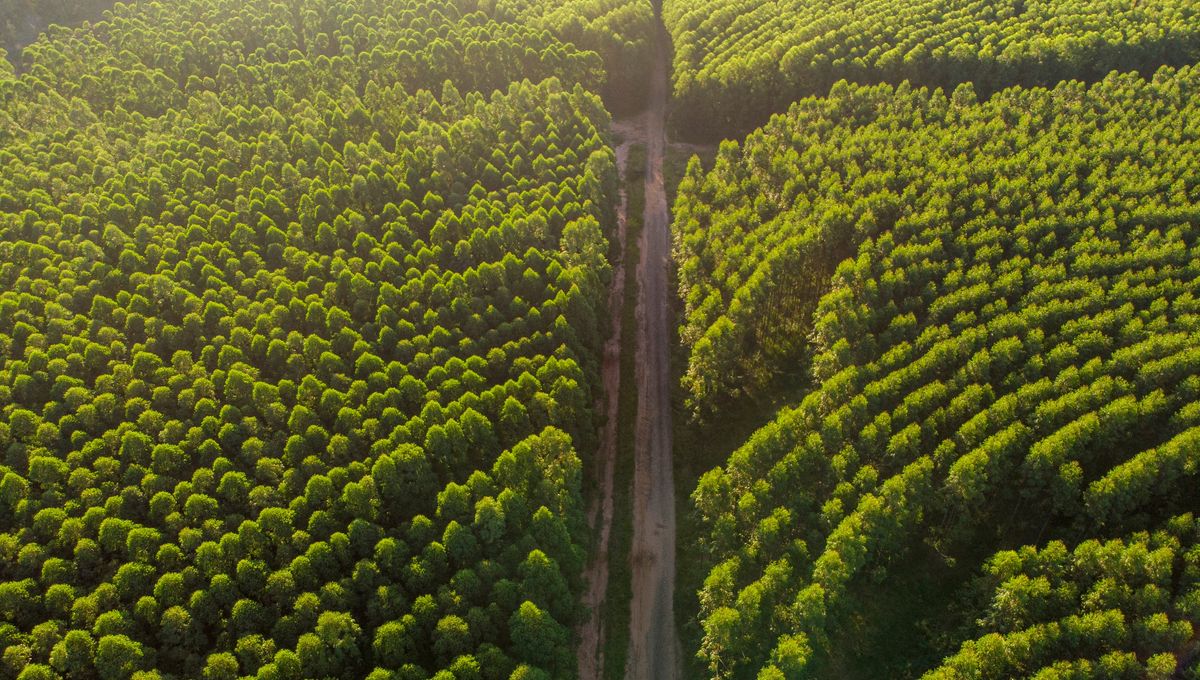
Carbon dioxide. CO2. It fills the air you breathe out. It is the product of the violent oxidation of carbon that we call burning – and we’ve been burning a lot of carbon. The CO2 accumulated in the atmosphere is one of the main greenhouse gasses responsible for global warming. Carbon fixing is the process of removing CO2 from the atmosphere, and is one way in which we could try and slow, or even reverse, global warming. Trees are exceptionally good at it.
How can trees fix carbon?
While we breathe oxygen in and CO2 out, trees do the reverse. They take CO2 from the air, and extract the carbon to build sugars. The carbon that was in the air is now “fixed” in the tree. Living trees are not only fighting global warming by fixing carbon through photosynthesis – a recent paper suggests that microbes living in the bark can fix methane, which is responsible for around 30 percent of global warming. Go trees!
When a tree is cut down (or dies) that carbon is released back into the atmosphere. Wood products like timber, however, can continue to store some amount of carbon, and release it more slowly. Unfortunately, the vast majority of deforestation is not for timber production. In the tropics, more than 90 percent of deforestation is due to agriculture.
There are 4 billion hectares of land currently covered by forests, there are 593 million hectares of land that are suitable for reforestation. The preservation and restoration of living forests is the best way to harness the carbon-fixing powers of trees. Planting trees outside forests – in urban areas, for example – also has the potential to fix carbon, albeit only after several initial years of growth.
However, in a recent study on the cost-effectiveness of forest restoration, the authors warn that “Achieving the entire mitigation potential of reforestation of 31.4 GtCO2 over 30 years would amount to less than 8 months of global GHG [greenhouse gas] emissions”.
Reforestation does in no way absolve our need to reduce greenhouse gas emissions.
How do we get forests back?
Reforestation efforts are mostly centered in the tropics, where trees grow quickly, and quickly capture carbon. Trees growing at higher latitudes can impact the Earth’s albedo. Wait, what? Albedo is the fraction of sunlight that is reflected, instead of absorbed, which warms up the planet. Trees that cover snowy areas impact the albedo because more solar radiation is absorbed by the trees, instead of reflected by the snow. In some cases, this can even negate the positive effects the trees have on carbon fixing.
There are two main ways to restore forests: planting and natural regeneration. Many factors need to be considered when choosing between these strategies: speed, cost, biodiversity, the needs of local communities, and non-carbon environmental impacts – just to name a few.
Regeneration is generally cheap and slow, planting is fast and expensive. Regeneration is also more biodiverse, and provides water provisioning and erosion control. Plantations are more likely to be cut down for timber, releasing some carbon back into the atmosphere.
At a global scale, “If your objective is to sequester carbon as quickly and as cheaply as possible, the best option is a mix of both naturally regenerating forests and planting forests” said Jacob Bukoski of the Oregon State University College of Forestry, co-author of the study on cost-effectiveness of forest regeneration, in a statement.
Can we solve climate change by planting trees?
In reforestation efforts, there is no one solution that fits all.
Some scientists argue that natural regeneration is overall the best way to fix carbon, but others believe that a more nuanced approach needs to be taken. Considering the many factors of the impact of plantation and reforestation, a recent study proposes a mixed approach, tailored to local differences.
The cost-effectiveness calculation of different reforestation efforts suggests that in more than half of the areas they studied across the globe “timber plantations sequester carbon at a lower cost than forests that grow back naturally”, said Jeff Vincent, a professor of forest economics and management at Duke University’s Nicholas School of the Environment and co-author of the cost-effectiveness study, in a statement.
For any of these plans to work, these solutions need to be permanent. Whether regenerated or planted, a forest’s effectiveness at storing carbon only exists as long as it is allowed to persist.
Source Link: Is Planting Trees The Solution To The CO2 Problem?